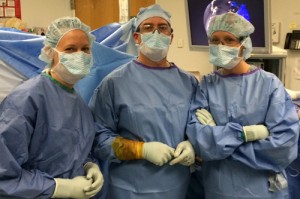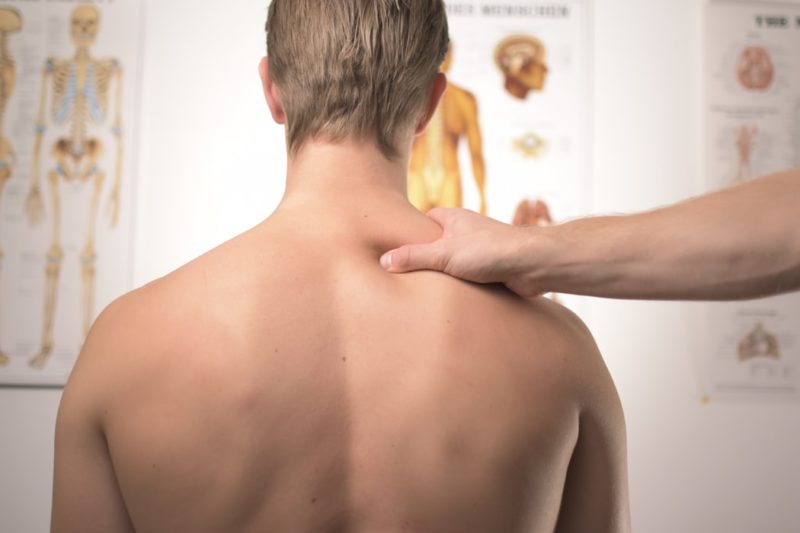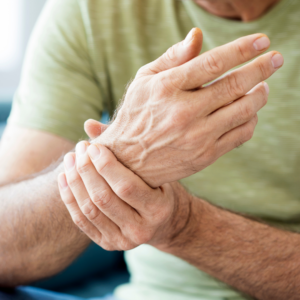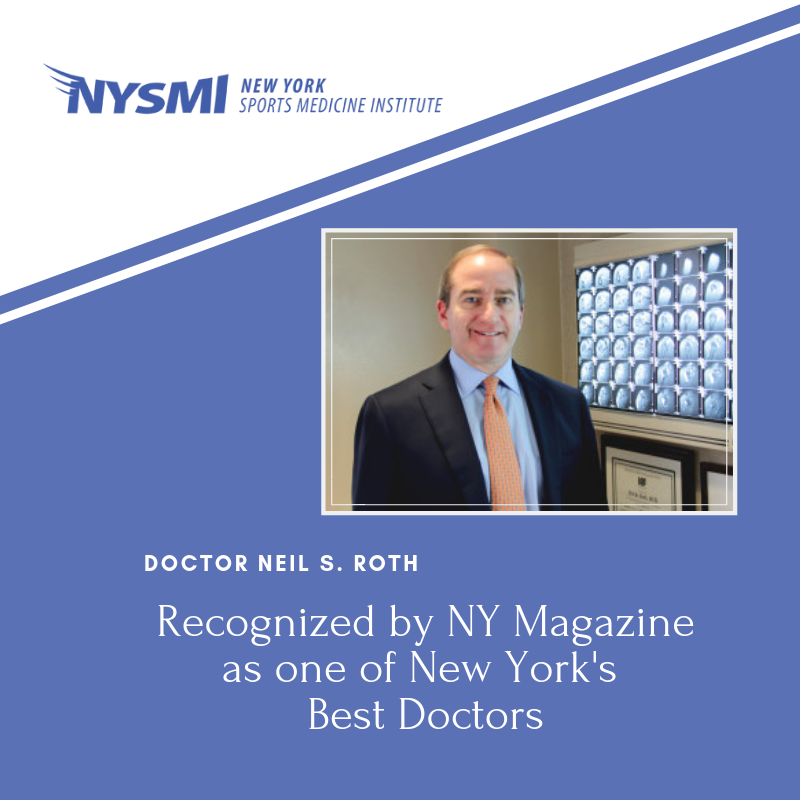
Orthopedic Surgeon in Westchester County NY

New York Sports Medicine Institute | Orthopedics is committed to excellence by providing the highest quality of orthopedic and sports medical care. Along with the treatment of immediate or chronic problems, NYSMI strives to integrate the doctrine of prevention in all treatment plans as a way to alleviate future difficulties.
NYSMI serves patients 3 years old and up, with treatment and surgery for orthopedic and sports injuries, to alleviate shoulder, knee, hip, and various other pains, from the mild to the severe.
Meet Our Orthopedic Surgeon in Westchester County NY
What Conditions Can an Orthopedic Surgeon in Westchester County NY Treat?
New York Sports Medicine Institute provides a wide range of highly specialized treatments to properly evaluate and treat sports-related and chronic conditions affecting the shoulder, knee, hip, elbow, hand, wrist, foot, and ankle. Sports injuries are often caused by trauma suffered during competition and repetitive or overuse wear and tear. Chronic conditions may include arthritis, age-related deterioration, or any number of factors related to use or associated health issues.
When surgery is required, NYSMI offers minimally invasive arthroscopic surgery for a number of conditions related to injury of the shoulder, knee, hip, elbow, foot, ankle, hand, and wrist. Our orthopedic surgeons are also highly regarded for providing hip, knee, and shoulder total joint replacement.
Physical therapy is frequently prescribed for the treatment of sports injuries and chronic injuries that may not require orthopedic surgery. Physical therapy is also prescribed to ensure optimal healing and training following some orthopedic surgery procedures. For a number of patients, conducting physical therapy at the New York Sports Medicine Institute provides convenience and comfort – a visit to one location serves multiple needs and provides comprehensive care to keep you in the game.
Click to learn more about specific services and ailments
What Does an Orthopedic Surgeon do?

Are you curious to know what a highly skilled orthopedic surgeon is able to do? This particular medical profession is often considered one of the most cutting-edge and in-demand fields in the industry. Not only can an orthopedic surgeon treat various injuries and traumas with both surgical and non-surgical techniques, but some even specialize in certain areas of the body. As the founder of New York Sports Medicine Institute, Dr. Neil S. Roth is a highly acclaimed board-certified orthopedic surgeon who specializes in the area of comprehensive sports medicine, shoulder, elbow, and knee surgery.
He has been recognized by New York Magazine as one of New York’s best doctors, as well as Castle Connolly’s top doctors in the New York Metro area. Amongst the list of prestigious doctors, Dr. Roth takes great pride in the acknowledgment of his entire team’s high level of expertise. If you have been looking for a highly distinguished orthopedic surgeon in Westchester County NY, contact us at New York Sports Medicine Institute. We offer extensive sports medicine treatment, orthopedic surgery, concussion care, and physical therapy at both our Westchester and New York City locations. We recommend you learn more about the various concentrations of orthopedic surgery and how it can help you.
Orthopedic Concentrations
Orthopedic surgery can be used to help treat patients with a wide variety of injuries or other related traumas. Some of the most common conditions orthopedic surgery can help treat may include the following:
- Shoulder Injuries such as:
- Rotator cuff tears.
- Tendonitis and bursitis.
- Arthritis of the shoulder.
- Frozen shoulder.
- Shoulder instability.
- Fractures.
- General shoulder pain.
- Knee injuries such as:
- ACL, MCL, and PCL injuries.
- Meniscus Tear.
- Osteochondritis Dissecans (OCD) of the knee.
- Articular cartilage injury.
- Autologous chondrocyte implantation (ACI).
- Total and partial knee replacement.
- Arthritis of the knee.
- General knee pain.
- Elbow conditions such as:
- Tennis elbow.
- Ligament construction of the elbow.
- Elbow dislocation and instability.
- Osteochondritis of the elbow.
- Hip injuries such as:
- Fractures and tears.
- Hip impingement (FAI).
- Snapping Hip.
- Arthritis of the hip.
- Hip replacement.
- Foot & Ankle conditions such as:
- Sprains, strains, and fractures of the foot and ankle.
- Arthritis of the foot and ankle.
- Tendonitis of the foot and ankle.
- Hand & Wrist complications such as:
- Fractures of the wrist or fingers.
- Tendonitis of the wrist.
- Ganglion cysts.
- Arthritis of the hand and wrist.
- Carpal tunnel syndrome.
The Difference at New York Sports Medicine Institute
At NYSMI, our team is highly specialized in performing orthopedic surgery and treating the above-listed injuries and conditions. Through our expertise, we strive to help each and every one of our patients restore normal and pain-free function back to the affected area. If you have been searching for a skilled orthopedic surgeon in Westchester County NY, contact us at New York Sports Medicine Institute. We want to provide you with the best care possible to get you back to feeling your best!
Orthopedic Surgeon Expertise
Since people tend to visit an orthopedic surgeon when their condition has gotten to a more severe or painful stage, orthopedic surgeons primarily focus on proper diagnosis and treatment for patients.
Diagnosis & Treatment
The various diagnostic tools orthopedic surgeons commonly use involve physical examinations, imaging studies, and lab tests. Treatment options can include both surgical and non-surgical procedures such as:
- Arthroscopic surgery – a surgical procedure using a tiny camera to see inside of a joint, used in different areas of the body.
- Open shoulder instability surgery.
- Rotator cuff surgery.
- Physical therapy treatment.
- Total or partial replacement of the shoulder, hip, or knee.
Depending on your particular injury or severity of your condition, different types of treatment plans may be recommended. It’s important to schedule an appointment with an orthopedic surgeon as soon as an injury takes place or a condition develops.
The Requirements
In order to become a board-certified orthopedic surgeon, there are several different accreditations you must first achieve. You must complete a four-year undergraduate program specifically comprised of one year of biology, one year of physics, and two years of chemistry. Then, followed by an additional four years of medical school and a post-graduate residency program. The residency program focuses solely on the specialty of orthopedic surgery. This allows prospective surgeons to get hands-on, practical exposure to the various surgical techniques and technologies used in this particular medical concentration.
The founder of New York Sports Medicine Institute, Dr. Neil S. Roth, is both a board-certified orthopedic surgeon and sports medicine doctor. He received his undergraduate degree from Duke University School of Medicine in Durham, North Carolina. He went on to complete his postgraduate studies and residency program at Columbia-Presbyterian Medical Center. Amongst the list of accreditations, Dr. Roth has also completed a fellowship in Sports Medicine at the world-renowned Kerlan-Jobe Orthopedic Clinic where he served as an assistant team physician for the Los Angeles Lakers, Dodgers, Kings and Angels, the Anaheim Ducks, and the University of Southern California. His high level of expertise and wide-set knowledge on the subject of sports medicine has set him apart as a skilled orthopedic surgeon.
Injury Specifics – Torn Rotator Cuff

Rotator cuff injuries are extremely common, but can often go undiagnosed. Some patients may not even be fully aware of where the rotator cuff is located precisely. A rotator cuff is essentially a group of muscles and tendons that keeps your upper arm bone firmly in its shoulder socket. Individuals who have had rotator cuff injuries can attest to how painful and debilitating it can be, even when you’re only doing everyday activities.
In order to know if you do in fact have a rotator cuff injury, it’s vital to understand whether or not you’re at risk, what the common causes are, and the types of symptoms you should be monitoring. If you’ve been dealing with discomfort and pain in your rotator cuff and have been searching for an orthopedic surgeon in Westchester County NY, contact us at New York Sports Medicine Institute. We offer both orthopedic care and physical therapy treatments for our patients to help them get back on track. Continue reading if you want to learn more about rotator cuff injuries and how you can detect whether you have one or not.
Who is at Risk?
Being that the rotator cuff is responsible for keeping your arm bone stabilized in the shoulder socket, individuals who perform repetitive motions with their arms can be at risk of developing a rotator cuff injury. Some examples include carpenters, painters, and those who are lifting objects repeatedly. Those who play sports such as baseball, tennis, and wrestling, which involve constant repetitive arm motions, are also at risk for a rotator cuff injury to occur. As patients age, their risk for developing this type of injury also increases, making older individuals much more susceptible to rotator cuff injuries.
Common Causes
Some of the common causes of rotator cuff injuries can vary, depending on the severity of your particular injury. Rotator cuff injuries are typically broken down into three distinct categories, such as:
- Tendonitis – a condition that can occur if the rotator cuff is being overused, causing inflammation in the tendons.
- Bursitis – caused by inflammation of the bursa, or fluid-filled sacs in between the rotator cuff and the arm bone.
- Rotator cuff strains or tears – this can be caused by an acute injury or overuse of the rotator cuff over time. This occurs when the tendons that connect muscles to bones becomes overstretched or even torn. This type of rotator cuff injury typically causes immediate and severe pain.
Symptoms of a Rotator Cuff Injury
It’s important to note that not all rotator cuff injuries lead to the development of pain. Some rotator cuff injuries can be the result of certain conditions that build up over a period of time. That being said, some common types of symptoms associated with rotator cuff injuries may include the following:
- The weakening of the shoulder.
- Tenderness or pain when trying to reach overhead.
- Pain in the shoulder, which is heightened at night.
- Difficulty sleeping on the afflicted shoulder.
- Loss of full range of motion in the shoulder and/or arm.
- Deep to dull aches in the shoulder and/or arm.
- Unable to carry out normal activities due to pain or discomfort.
If you have been experiencing any of these symptoms for a duration lasting longer than a week, it’s crucial you visit an orthopedic surgeon.
Diagnosing a Rotator Cuff Injury
A doctor will be able to determine and diagnose your rotator cuff injury by conducting a physical examination, analyzing previous medical history, and utilizing various imaging scans. These scans can include:
- X-rays.
- Magnetic resonance imaging (MRI).
- Ultrasounds.
Your orthopedic surgeon will be looking to see what your arms range of motion is like if there are any tears present, and whether other conditions such as arthritis, can be ruled out.
Treatment Options
If you are diagnosed with a rotator cuff injury, there are several different treatment plans available. These options can range from home remedies to surgery depending on the extent of your injury.
Non-invasive treatment methods have been reported to help improve symptoms by nearly 50%. These various treatments consist of:
- Applying cold or hot packs to reduce swelling and inflammation.
- Resting the affected shoulder and wearing a sling for added support.
- Exercising to help restore and improve your arms range of motion.
- Over-the-counter anti-inflammatory medications, such as ibuprofen.
- Physical therapy.
Other forms of treatment, such as surgery and injections, are typically recommended for those who have a much more severe rotator cuff injury. Steroid injections into the shoulder joint can provide temporary relief, but should not be used frequently as they can weaken your tendons. When it comes to surgery, there are various different kinds that can be performed depending on the type of rotator cuff injury you may have developed.
How to Prevent Future Rotator Cuff Injuries
Preventing rotator cuff injuries from happening in the future is possible. If you have had a previous rotator cuff injury, it’s important to consult with your physical therapist so they can provide you with daily stretches and exercises to help strengthen your shoulder. If you have been looking for an orthopedic surgeon in Westchester County NY, visit us at New York Sports Medicine Institute. Not only do we offer superlative orthopedic care, but we also have highly-experienced physical therapists who work one-on-one with our patients to ensure they stay injury-free. Other prevention methods can consist of taking a break from playing strenuous sports or avoiding repetitive motions involving the arm and shoulder.
Contact Us at New York Sports Medicine Institute
If you or someone you know is in need of an orthopedic surgeon in Westchester County NY, or in the Westchester area, contact us at New York Sports Medicine Institute. Dr. Neil S. Roth heads a highly experienced team of orthopedic specialists who are all well versed in the area of orthopedic surgery and sports medicine. New York Sports Medicine Institute has been treating patients with orthopedic injuries and conditions for nearly 16 years. Schedule an appointment with us and receive the proper treatment you need for your medical injuries!
What Is the Main Cause of Frozen Shoulder?

Frozen shoulder, also known as adhesive capsulitis, consists of the stiffness and pain in the shoulder joint. This pain worsens over time but can slowly resolve on its own. At New York Sports Medicine Institute, we can resolve the symptoms associated with frozen shoulder. Our Orthopedic Surgeon in Westchester County NY can recommend the proper treatment to speed up the healing process.
Symptoms of Frozen Shoulder
There are three official stages of frozen shoulder. Each stage develops slowly and can last several months. Some people state the pain of frozen shoulder is the worst at night, which disrupts sleep. The three phases consist of the following:
- Freezing stage- The freezing stage of frozen shoulder consists of any movement of the shoulder causing pain, causing the range of motion to become limited.
- Frozen stage- During the frozen stage, pain can diminish slightly, but the shoulder can become more stiff and difficult to use.
- Thawing stage- The pain subsides, and your shoulder’s range of motion begins to improve during the thawing stage.
Causes of Frozen Shoulder
A capsule of connective tissue holds the bones, ligaments, and tendons of your shoulder together. When this connective tissue capsule thickens and tightens, frozen shoulder occurs, and movement in the shoulder becomes restricted. There isn’t one specific cause that results in frozen shoulder; however, people who go a long time without moving their shoulder are most susceptible to frozen shoulder. If you lose mobility in your shoulder due to frozen shoulder, try Orthopedic Surgeon in Westchester County NY.
Frozen Shoulder Risk Factors
The following risk factors can increase your chances of obtaining frozen shoulder:
- Age and sex- People over the age of 40, particularly women, are more prone to getting frozen shoulder.
- Immobility of the shoulder- People who have reduced shoulder mobility can develop frozen shoulder. Stiffness can result from a rotator cuff injury, a broken arm, stroke, or recovery from surgery.
- Systemic diseases- Certain diseases can increase the chances of developing frozen shoulder. This includes diabetes, hyperthyroidism, hypothyroidism, cardiovascular disease, tuberculosis, and Parkinson’s disease.
How to Prevent Frozen Shoulder: Orthopedic Surgeon in Westchester County NY
Immobility is the most common cause of frozen shoulder. To prevent immobility, talk to our Orthopedic Surgeon in Westchester County NY about exercises you can do to keep your shoulder active. By keeping your shoulder moving, stiffness is less likely to occur.
Diagnosis of Frozen Shoulder
If you feel pain and stiffness in your shoulder, you should see our doctor for a physical exam. Our Orthopedic Surgeon in Westchester County NY will ask you to move your shoulder in certain ways to evaluate its active range of motion. Our doctor will also check the passive range of motion by relaxing your muscles while moving your arm. Another way of observing the active and passive range of motion is by our doctor injecting your arm with an anesthetic. Sometimes imaging tests like X-rays or MRI are necessary to rule out other problems.
Frozen Shoulder Treatment
Shoulder pain and short range of motion can be healed through several treatments. One option our specialist may recommend is medication. Over-the-counter pain relievers can reduce pain and inflammation, such as aspirin and ibuprofen. Our doctor can also prescribe more potent medicine, such as pain-relieving and anti-inflammatory drugs. Physical or orthopedic therapy is also suggested to learn exercises and stretches to increase the range of motion. Frozen shoulders tend to get better independently without surgical help, but if symptoms persist, a procedure may be required. Some of the methods that can help frozen shoulder include the following:
- Steroid injections- Corticosteroids injected into your shoulder can decrease pain and improve range of motion.
- Joint distension- Sterile water injected into the joint capsule can make moving the shoulder joint easier.
- Shoulder manipulation- A doctor can move and manipulate your shoulder under anesthesia to loosen the tissue in different directions.
- Surgery- The removal of scar tissue and adhesions inside your shoulder joint using small incisions.
Contact Our Office: Orthopedic Surgeon in Westchester County NY
If you believe you may be going through a stage of frozen shoulder, Orthopedic Surgeon in Westchester County NY can help. Our specialist at New York Sports Medicine Institute will address your symptoms and recommend the best course of treatment for you based on your concerns. Contact our team to schedule an appointment for an evaluation of your shoulder.
Can You Develop Arthritis After An Injury?

Unfortunately, after an injury to the joint, arthritis can occur without proper care. This type of arthritis is called post-traumatic arthritis. It is a common form of osteoarthritis, which results from protective cartilage wearing down. Around 5.6 million people in the United States are affected by post-traumatic arthritis after an injury. At New York Sports Medicine Institute, our specialists treat post-traumatic arthritis with orthopedic care. If you are looking for an Orthopedic Surgeon in Westchester County NY to treat or diagnose your post-traumatic arthritis, consider our team to assist you.
Post-traumatic Arthritis
Post-traumatic arthritis develops as a result of the wearing down of a joint after trauma or injury to it. Fracture, cartilage damage, acute ligament sprain, or chronic ligamentous instability are some of the injuries that may result in post-traumatic arthritis. The common locations of post-traumatic arthritis include the hip, ankle, and knee joints.
Knee Injuries Resulting in Post-traumatic Arthritis
The most common out of the three locations of post-traumatic arthritis is the knee. People with knee injuries are 10 times more likely to be diagnosed with arthritis than hip or ankle injuries. An anterior cruciate ligament (ACL) and meniscal injury are two of the injuries that can later bring on arthritis. Contributing factors from these injuries that result in post-traumatic arthritis include the following:
- Increased inflammatory markers
- Tissue damage
- Cartilage degradation
- Altered joint loading
- Quadriceps muscle weakness
Symptoms of Post-traumatic Arthritis
Symptoms can arise immediately or as long as two to five years after the injury to the joint, depending on the severity. Excess body weight is known to increase the symptoms of post-traumatic arthritis. If you are experiencing symptoms of post-traumatic arthritis, visit our Orthopedic Surgeon in Westchester County NY. The symptoms include the following:
- Joint pain
- Joint instability
- Swelling of the joint
- Synovial effusion
- Fluid accumulation in the joint
- Decreased tolerance for movements that stress the joint
Diagnosing Post-traumatic Arthritis
When you visit our Orthopedic Surgeon in Westchester County NY, our specialist will ask about the history of your injury, your overall medical history and evaluate the joint pain. A physical examination will then be performed to evaluate the progression of your arthritis. In addition, tests such as an X-ray, CT scan, or MRI may be performed. Blood tests can also be ordered. These measures will determine the severity of your post-traumatic arthritis and will determine which treatment plan is right for you.
Treatment of Post-traumatic Arthritis
Post-traumatic arthritis progresses as time goes on, so it is important to receive treatment as soon as it is recognized or diagnosed. The route of treatment for post-traumatic arthritis is similar to that of osteoarthritis. Less invasive treatments consist of weight loss, low-impact exercise, and strengthening of the muscles surrounding the joint. If these less invasive treatment methods aren’t efficient, medication, orthopedic care, or cortisone injections may be administered. All of these nonsurgical treatments make the joint more comfortable to deal with, however; they do not completely cure arthritis. In more severe cases of post-traumatic arthritis, when nonsurgical treatment isn’t effective anymore, surgery may be suggested. Surgery may include debriding, reconstructing, or replacing worn-out joint surfaces. Our Orthopedic Surgeon in Westchester County NY can implement some of these treatment methods to help with your post-traumatic arthritis.
Post-traumatic Arthritis Prevention
While the injury is inevitable, some precautions can be taken after an injury to avoid post-traumatic arthritis. For instance, if you have sustained an injury it is advised to take action, such as rehabilitation or rest, to heal the injury, so it doesn’t result in arthritis down the line. It is found that children in sports who take time to heal the injury are less likely to avoid getting injured again and recover better. Also, to avoid the risk of arthritis, it is recommended to maintain a healthy body weight, eat healthy foods, and perform low-impact exercises. The less weight put on an injury, and the more healing, the less likely post-traumatic arthritis will form.
Contact New York Sports Medicine Institute
If you or someone you know may be suffering from post-traumatic arthritis after an injury, contact our office for assistance. Our Orthopedic Surgeon in Westchester County NY will address your symptoms and perform tests to provide you with the best form of treatment. Schedule an appointment with New York Sports Medicine Institute today.
Shoulder Instability

Shoulder instability is commonly know by Orthopedic Surgeon in Westchester County NY when the shoulder joint is too loose, and therefore able to slide around too much in the socket. It usually occurs when the lining of the shoulder joint, ligaments, or labrum becomes stretched, torn, or detached, which allows the ball of the shoulder joint to move.
Shoulder Instability Explained
On the body, the shoulder is a “ball and socket” joint. It is composed of the humeral head, known as the “ball,” and the glenoid, referred to as the “socket.” When the humeral head is separated from the glenoid, it is called shoulder instability. The separation can be quick and partial which only lasts for a few seconds, known as subluxation. Otherwise, the ball and socket may get stuck in the dislocated position and pose a more significant condition for the shoulder.
Types of Shoulder Instability
The shoulder faces a lot of use every day and can eventually lose its stability. There are several types of shoulder instability that one may experience. Orthopedic Surgeon in Westchester County NY treats all kinds of shoulder instability injuries.
One is shoulder dislocation and subluxation. Dislocations are when the humerus comes all the way out of the glenoid, whereas a subluxation is when the humerus only partially slides in and out of place quickly.
Another type of instability is the labral tear, which can occur when the labrum is torn or peeled off of the glenoid. Or, shoulder instability can be attributed to genetic conditions. Some people are born with loose shoulder ligaments, which are apt to shoulder instability.
Symptoms of Shoulder Instability
Those with instability of the shoulder joint may sometimes feel the ball of the shoulder come out of its socket, or “give way.” This often causes pain for the individual and can happen with certain movements of the shoulder. Additionally, a decreased range of arm and shoulder motion might be a symptom of the injury. Numbness or tingling down the arm may also indicate shoulder instability.
Diagnosing Shoulder Instability: Orthopedic Surgeon in Westchester County NY
To diagnose shoulder instability, a complete history and physical exam should be done by the physician. Before seeing an Orthopedic Surgeon in Westchester County NY, this exam should include palpation to check for points of tenderness and determine a range of motion and strength of the shoulder.
As to the degree of shoulder joint looseness, specific tests can be done to assess the damage. Usually, x-rays are used to obtain information about the possible causes of the instability and to rule out other causes of shoulder pain, like a fracture.
Other tests, such as an MRI scan or a dye test, can be done to further evaluate the bones and tissues of the shoulder joint.
How to Treat Shoulder Instability: Orthopedic Surgeon in Westchester County NY
This type of injury can often be treated without surgical methods. Things such as activity modification, anti-inflammatory medication, and physical therapy can significantly help with pain and mobility of the shoulder while working towards recovery.
It is important to rest your shoulder and avoid aggravating it for a few days after an injury. If your pain is bad, a sling might be used to provide temporary immobilization. After pain and swelling go down, exercises can begin. Strengthening exercises can work to improve motion and mobility for your shoulder. Usually, these exercises are personally recommended by a trained physical therapist.
If there are torn or stretched ligaments within your joint that need to be fixed, an Orthopedic Surgeon in Westchester County NY may be recommended so that your ligaments can better hold your shoulder joint in place.
Who Gets Shoulder Instability?
Athletes who compete in sports that require overhead activities can develop shoulder problems and pains. Additionally, those with connective tissue disorders may have loose shoulder joints which can lead to shoulder instability. Those who have suffered a prior shoulder dislocation often develop chronic shoulder instability. Males in their teens or 20s who tend to be physically active are at the highest risk for shoulder dislocation.
How to Prevent Shoulder Dislocation
There are some simple exercises that can be practiced to help prevent shoulder instability. Rotator cuff and shoulder blade/scapular exercises, combined with push-ups and exercises that challenge the stability of the joint, can help minimize the risk of this injury.
Orthopedic Surgeon in Westchester County NY
New York Sports Medicine Institute is committed to providing the highest quality of orthopedic and sports medicine care. Serving patients 3 years old and up, NYSMI performs treatments and surgeries for orthopedic and sports injuries to alleviate shoulder, knee, hip, and various other pains, from mild to severe. Contact us today to request an appointment and treat your shoulder instability.

